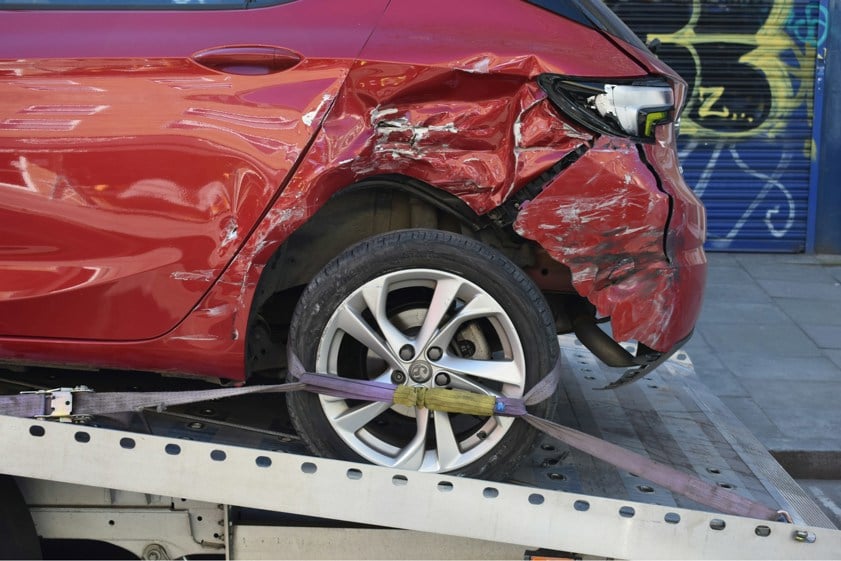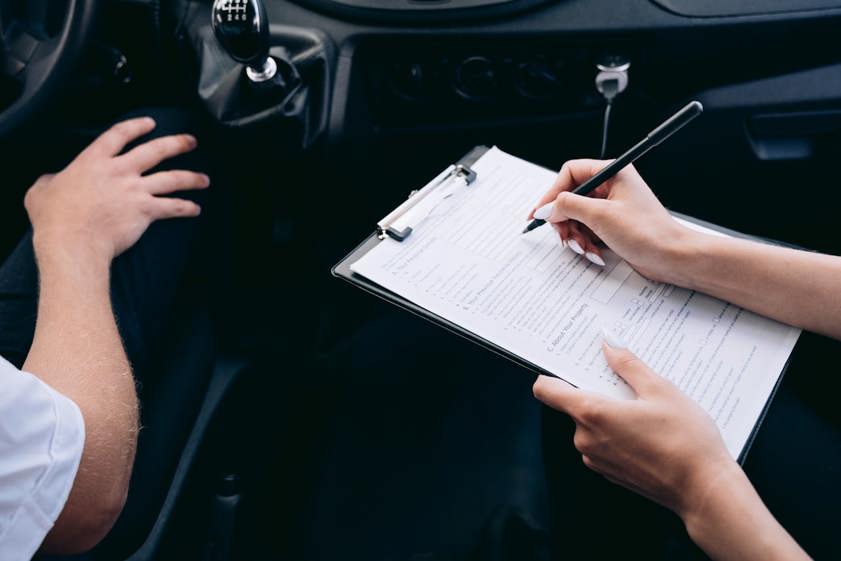
Writing off a car isn’t something any driver plans for, but you’ll be happy to know it happens more times than you think. In fact, almost 24% of British drivers have written off a car, so you're not alone (Churchill).
One minute, you’re driving home from work peacefully; the next, you’re swapping insurance details at the side of the road! It is indeed a stressful situation.
If you’re leasing a vehicle, the situation can feel even more confusing. After all, it’s technically not your car, so what happens next?
In this blog, we’ll break down exactly what it means when a car is written off, the different insurance categories involved, what steps to take if it's regarding a lease car, and the importance of GAP insurance.
Let’s start with the basics. What does it actually mean when a car is written off?
A write-off, or a ‘total loss’ as insurers like to call it, is when your car is so severely damaged that the cost of repairs would cost more than the car is worth.
This doesn’t always mean that the car is a mess, sometimes innocuous damage can tip the cost over the edge, especially if the value of your car is relatively low.
When a situation like this happens, your insurance company decides it's better to pay you the car’s current value rather than pay for the repairs.
If you’re leasing, it can get a bit tricky. Since you don’t own the car, the payout from the insurer doesn’t go into your pocket. It goes to the finance company, and if the payout still doesn't cover the full amount you owe on your contract, you’re left to make up the difference!
Rest assured, there’s a solution for this, and it’s called GAP insurance, which we'll talk more about below.
In the UK, write-offs are split into four main categories (as if the process couldn’t get any more complicated): A, B, S, and N.
Each category signals a different condition of the vehicle and whether it can get back on the road.
- Category A - Total loss. This is the worst-case scenario. The car is so badly damaged that you won’t be seeing it again.
- Category B - Major damage, but some parts can be recovered. The car itself is a goner, but it’s not a total waste. Some components might still be usable, but the vehicle itself will never return to the road.
- Category S - Structural damage. This one is pretty common. The car has taken a hit or crashed, but it can be made roadworthy again. Insurers may still write it off if the repairs are too costly, but it’s not the end of the line.
- Category N - No structural issues but uneconomical to fix. This is a nice write-off (if there’s such a thing). The damage isn’t structural, but the cost of fixing still outweighs the car's value.
It’s worth noting that you’ll only usually hear about these categories if you’re trying to buy a car that’s previously been written off. That said, it’s still worthwhile being in the know.

If your lease car has been written off, the first thing to remember is don’t panic. Yes, it’s a stressful situation, but the process is pretty straightforward if you know what you’re doing.
Contact your leasing provider
As soon as you know that your car is a write-off, get in touch with your leasing broker or finance provider. Since you don’t own the car, they’re the ones who will deal with the insurance.
The sooner you tell them, the better.
“The most important thing to do after a write-off is to contact your leasing provider straight away. We’ll help coordinate with your insurer and guide you through the next steps”

Let the insurer do their thing
Your insurer will work out the vehicle’s current market value and agree on a figure with your lease broker/finance provider. Again, as you don’t own the car, the payment goes to them, not you.
If the payment doesn’t cover the cost of your lease (which it usually won’t), you’ll still owe the remaining payments on the lease contract. This is where GAP Insurance comes in, covering the difference between your payout and what you still owe on your contract.
Don’t have GAP? Read our GAP Insurance guides for more details.
Check your GAP Insurance
If all the above has happened, GAP will step in to cover the difference between what your insurer pays and what you owe on the lease. You don’t have to worry about paying out a lump sum, GAP has it covered.
Yes, at least for a little while. If your lease car is written off, your monthly payments don’t vanish into thin air.
You’ll carry on making payments until the leasing broker/finance provider confirms the agreement is settled.
If you’re curious about this and lease with Nationwide, don’t hesitate to call one of our leasing experts on 0345 811 9595.
Having your lease car written off is no fun, and it can feel like a right hassle. However, it's much easier to handle if you understand how the process works.
Remember that a write-off doesn’t always mean a total wreck, communication with your leasing broker or finance provider is everything, and GAP Insurance can save your bacon.
Looking to start fresh with a new lease deal or want to learn more about protecting your lease car? Check out our GAP Insurance guides or browse our latest lease deals.

